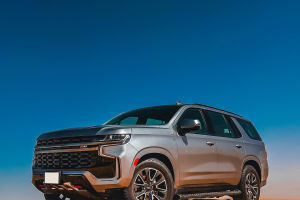The history of automobiles dates back to the 19th century when German engineer Otto developed the world's first reciprocating piston four-stroke engine in 1867.
This invention laid the foundation for the modern automobile industry. Later, in 1885, Karl Benz purchased Otto's patent for the internal combustion engine and installed it in a three-wheeled carriage, marking the birth of the world's first automobile.
Since then, automobiles have undergone significant advancements, leading to their classification based on various factors.
Classification of Automobiles:
General Transportation Vehicles:
General transportation vehicles encompass cars, buses, and trucks. Cars and buses are primarily used for carrying people, while trucks are designed for transporting goods. Cars can be further categorized based on their engine displacement, such as micro cars, light cars, intermediate cars, middle-class cars, and luxury cars.
Special Purpose Vehicles:
This classification divides vehicles into two categories. The first category includes vehicles equipped with specific equipment for specialized tasks, like fire trucks, police cars, and sanitation vehicles. The second category consists of vehicles used for transportation purposes, such as concrete trucks, semi-trailers, and garbage trucks.
Specialized Vehicles:
Specialized vehicles are designed for specific functions, and one prominent example is racing cars. These vehicles are built for high speed and power, making them suitable for professional sports car races seen on TV and in movies.
New Energy Vehicles:
New energy vehicles utilize unconventional motor fuels as their energy sources. This category includes hybrid vehicles, pure electric vehicles, fuel cell electric vehicles, and emerging technologies like hydrogen-powered cars. These vehicles play a crucial role in promoting environmental protection and energy efficiency.
Classification based on Power Unit:
The power unit of an automobile is a vital component that contributes to its environmental sustainability, energy efficiency, and safety. This classification encompasses different types of power units, including internal combustion engines, piston internal combustion engines, electric cars, battery-powered cars, fuel cell cars, hybrid cars, and even experimental jet cars.
Components of an Automobile:
An automobile typically consists of four major components:
Engine:
The engine is responsible for generating power and is composed of various systems, including the crank-rod mechanism, gas distribution mechanism, fuel supply system, ignition system, lubrication system, cooling system, and starting system.
Chassis:
The chassis supports the vehicle's structure and includes the transmission system, driving system, steering system, and braking system. The transmission system transfers power from the engine to the drive wheels through components like the clutch, transmission, universal transmission, and main reducer.
The driving system includes the frame, steering axle, drive axle, suspension, and wheels, while the steering system comprises the steering gear and steering mechanism. The braking system is typically composed of two independent devices, namely the driving brake system and the parking brake system.
Body:
The body provides space for the driver, passengers, and cargo. It is designed to ensure comfort, safety, and aesthetics.
Electrical Equipment:
The electrical equipment in an automobile includes the power supply, ignition system, starting system, lighting system, signal system, and instrumentation.
The automobile industry has come a long way since the invention of the internal combustion engine in the 19th century. Today, automobiles are classified based on their purpose, power units, and specialized functions. The different components of an automobile, including the engine, chassis, body, and electrical equipment, work together to create a reliable and efficient means of transportation.
With continuous advancements in technology and the growing demand for sustainable transportation, the future of automobiles holds exciting possibilities.


